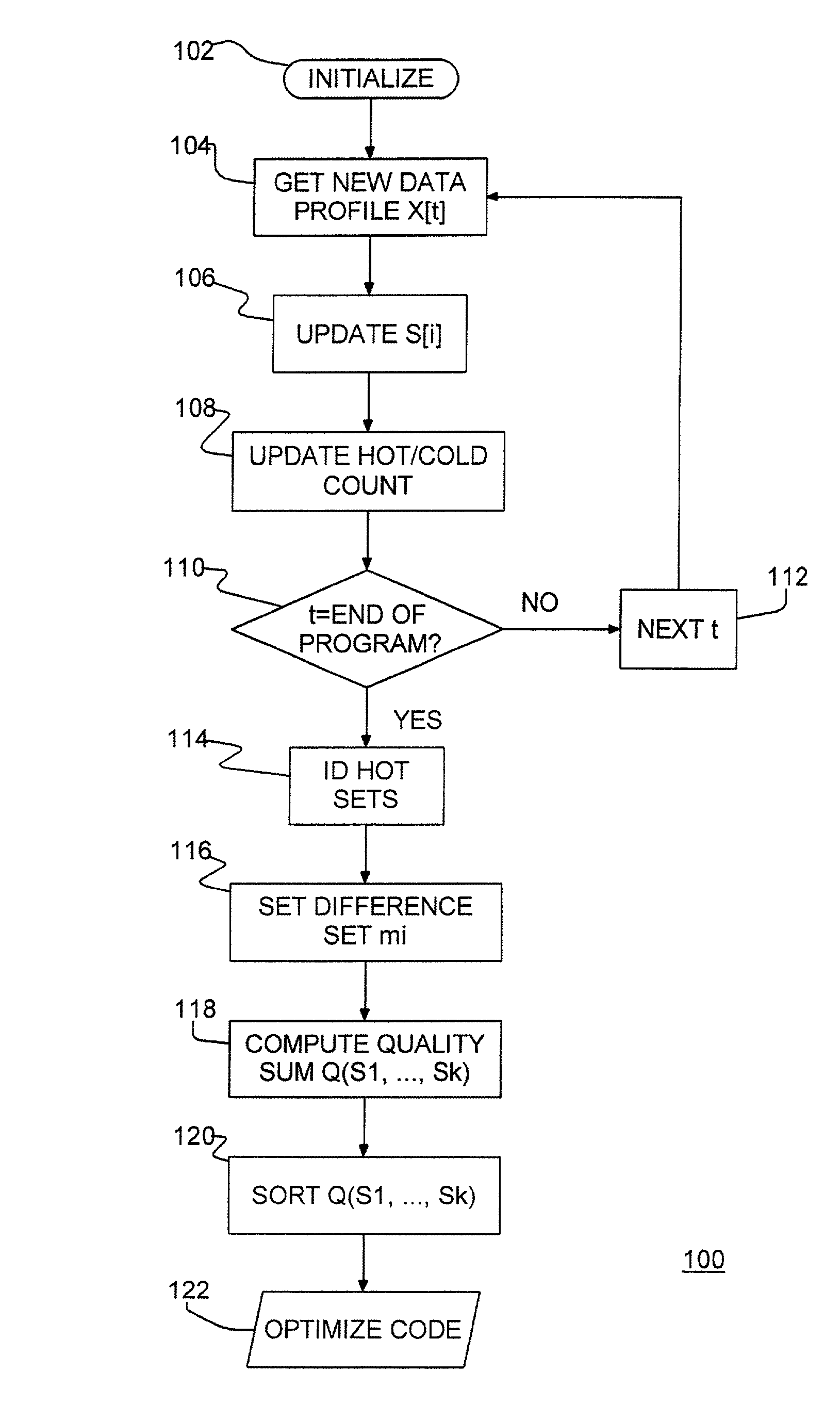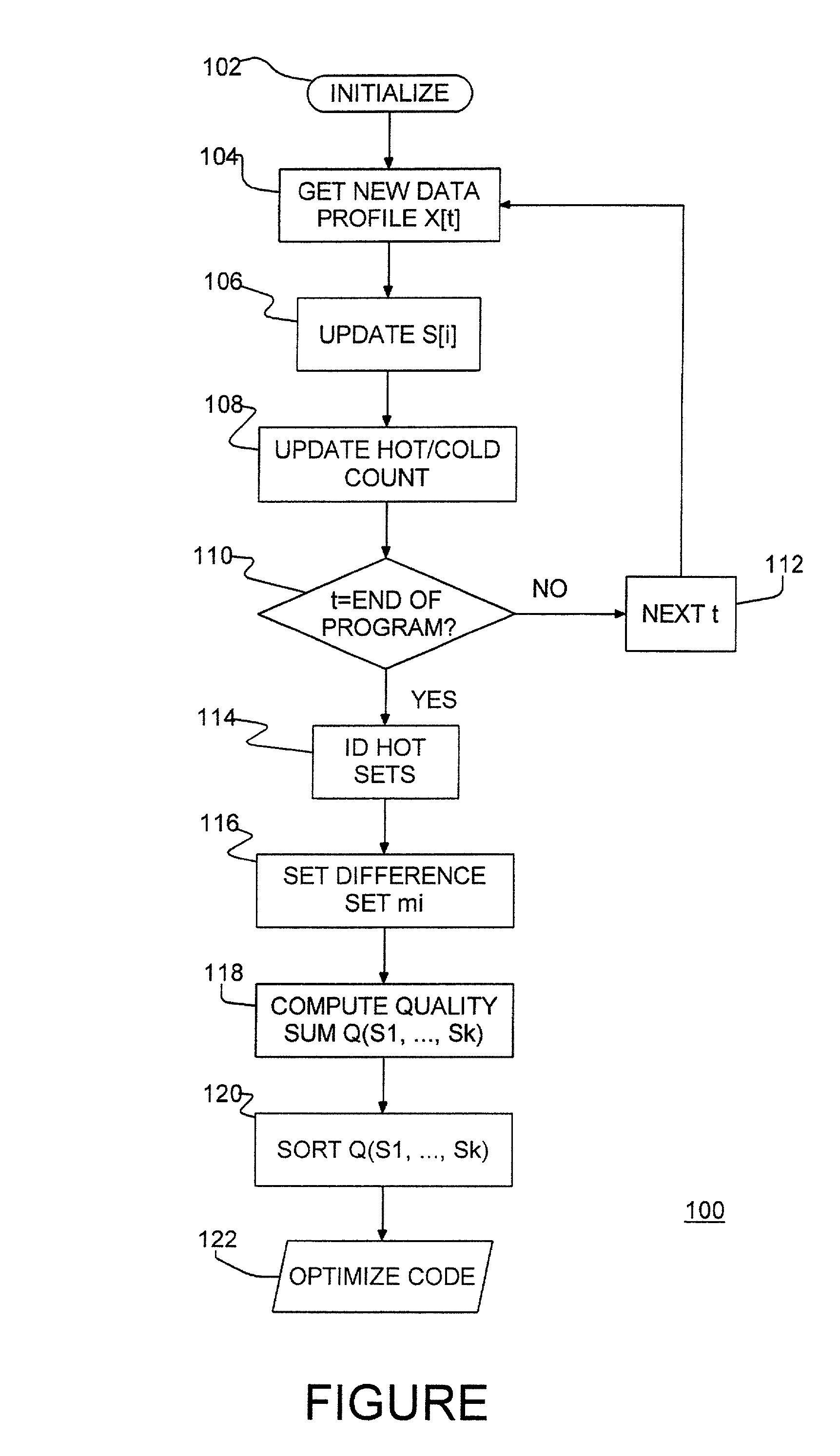Restructuring of executable computer code and large data sets
- Summary
- Abstract
- Description
- Claims
- Application Information
AI Technical Summary
Problems solved by technology
Method used
Image
Examples
Embodiment Construction
[0018] The present invention is a method of profiling code to identify a small number of modes of execution and restructuring the code and / or data sets to be suitable for running in the different modes.
[0019] A single path of a program can be described as a sequence of basic blocks X[1], X[2], . . . , X[t], . . . , X[m] where X[t] is the block which is executed in current time position t in the sequence of M blocks. An enumeration of all the distinct basic blocks of the executable may be represented as B1, B2, . . . , Bt, . . . Bm. N[i,t] may denote the number of idices k<=t such that X[k]=Bi, i.e., N[i,t] is the number of times the block Bi was executed prior to t. The ratio F [i,t]=N[i,t] / t gives the observed average frequency of that block prior to t. Similarly, N[i,j,t] denotes the number of indices k<=t such that X[k]=Bi, and X[k+1]=Bj, i.e., N[k,j,t] is the number of times the block Bj was executed immediately after Bi prior to t. The ratio F[i,j,t]=N[i,j,t] / t gives the observ...
PUM
 Login to View More
Login to View More Abstract
Description
Claims
Application Information
 Login to View More
Login to View More - R&D
- Intellectual Property
- Life Sciences
- Materials
- Tech Scout
- Unparalleled Data Quality
- Higher Quality Content
- 60% Fewer Hallucinations
Browse by: Latest US Patents, China's latest patents, Technical Efficacy Thesaurus, Application Domain, Technology Topic, Popular Technical Reports.
© 2025 PatSnap. All rights reserved.Legal|Privacy policy|Modern Slavery Act Transparency Statement|Sitemap|About US| Contact US: help@patsnap.com


